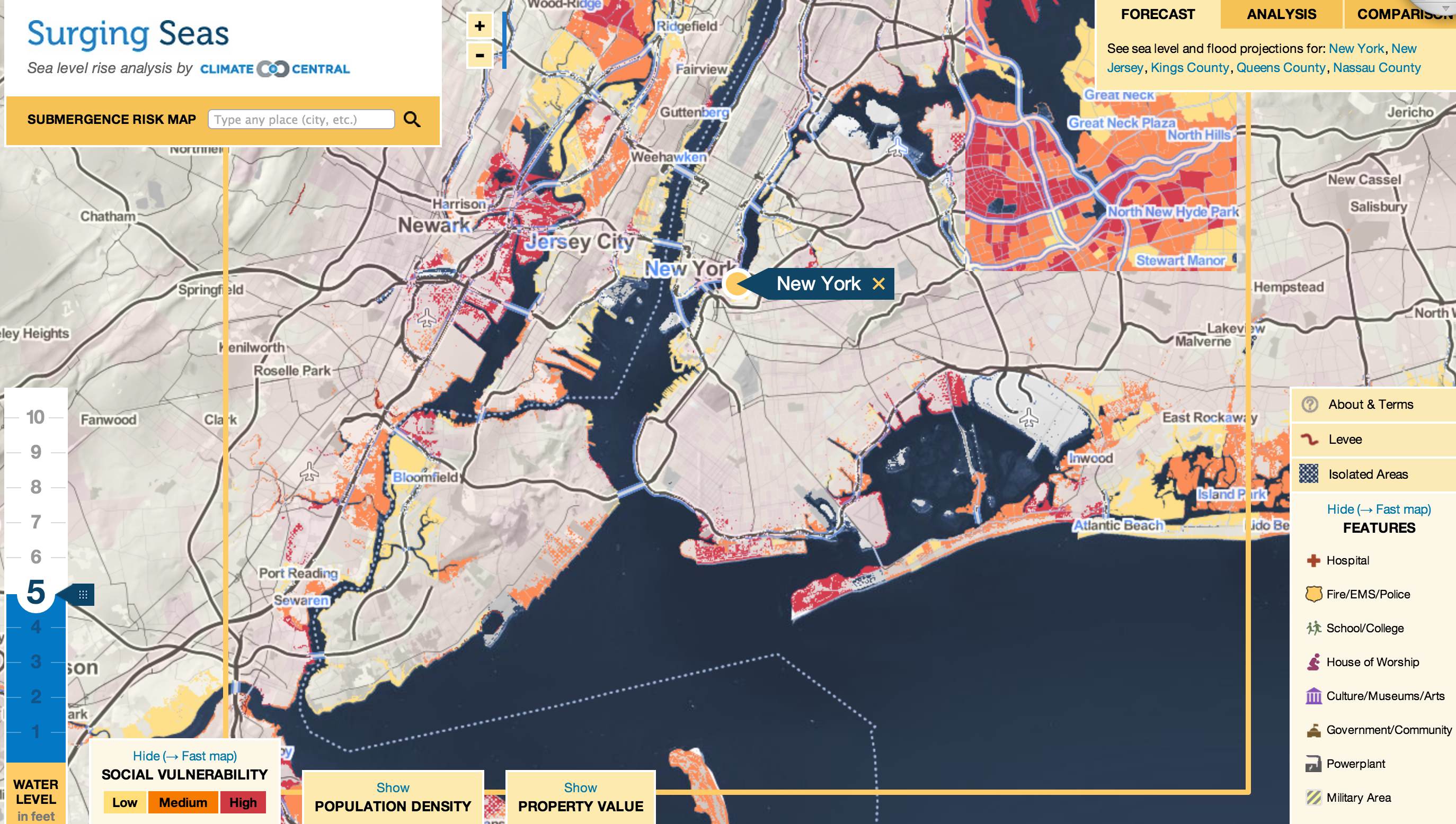
When the military declares that climate change is a factor worth paying careful attention to, we know that the wearisome period of battling naysayers is far behind us. We have entered the epoch of thinking about what to do when the water rises.
At The Journal of Wild Culture we call this new future practice: living today according to how we should be living tomorrow when things are different.
New future practice on the subject of climate change involves looking at the decisions we’re making today related to, to take one example, sea levels. Maybe for the last few years you've had your eye on that little business up for sale on the New Jersey shore? Maybe now, after the storm of 2012 that flooded parts of Manhattan and a whole lot of the states of New York and New Jersey, you’re less inclined.
One of the good organizations we’re following lately, Climate Central, is looking ahead to show where climate change might take us (see below). By absorbing the reality of possibility — that by 2050 there will be less land mass on the planet, much of it inhabited — at the least we are embracing what is the new ugly present. As astoundingly difficult as it is to swallow the new ugly present, the sooner we will bring it into our daily thinking and daily doing and the sooner we will adapt to what’s coming.
"New research indicates that climate change has already triggered an unstoppable decay of the West Antarctic Ice Sheet. The projected decay will lead to at least 4 feet of accelerating global sea level rise within the next two-plus centuries, and at least 10 feet of rise in the end." — Ben Strauss, Climate Central
VIEW this map at Climate Central.
READ a Climate Central article on this story.
SUPPORT the good work of this organization.

RELATED CONTENT: a recent article and one minute podcast on the topic: 'Hurricanes Move Away from Equator with Expanding Tropics'.


Add new comment